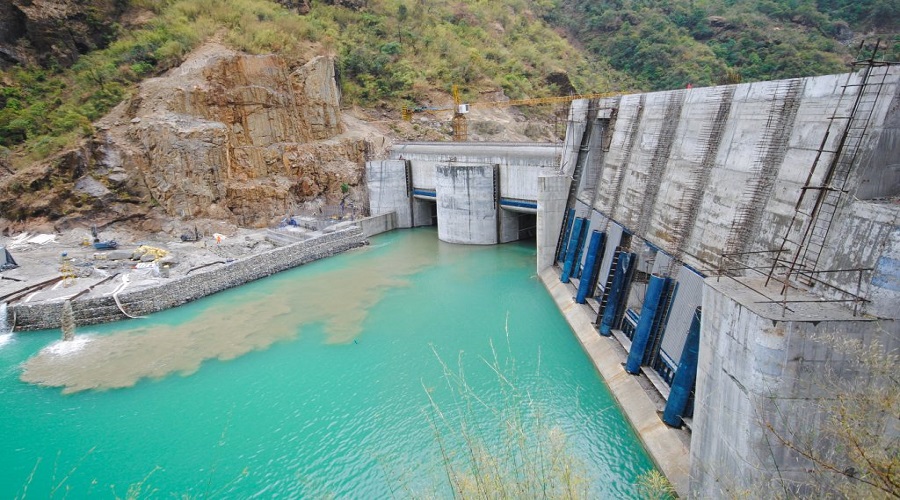KATHMANDU: The process of purchasing electricity generated in Nepal has become more challenging due to India’s increased demands. The Indian government has added to the disruption by requesting unrelated details of investors from Nepalese banks and financial institutions involved in hydropower projects aimed at exporting electricity.
Previously, India only required information regarding the equity of the project’s promoter company. However, they have now expanded their requests to include comprehensive information about the loans invested in the project. India is seeking details about the loan amount, the banks and financial institutions involved, as well as the countries and individuals who have invested in these banks.
This new requirement for financial closure approval of proposed projects intended for export permits has reduced the likelihood of immediate authorization to sell electricity to more projects in India. Concerns have arisen that India’s actions will lead to wastage of electricity during the rainy season.
Over the past year, India has not granted approval for any new projects seeking to sell electricity in India. “Even now, we continue to send numerous documents to India as per their export requirements,” said a source from the electricity authority.
Nepal began exporting electricity through India’s competitive market, the ‘Indian Energy Exchange,’ in 2021. Presently, Nepal has permission to export electricity equivalent to 452 MW in the ‘day ahead’ market, where prices are fixed one day in advance. At that time, financial closure details were not necessary. However, India has recently become stricter in its approach.
India has also introduced the requirement for the renewal of export licenses on an annual basis. Officials speculate that in the future, India may request financial closure details for projects that have already received export permission, along with comprehensive information about the bank investors involved in the closure.
“The demand for details related to banks and financial institutions has created problems,” stated an official from the authority. “This reflects India’s strategic interest in electricity exports.”
While India’s international electricity trade procedures set limits, they prohibit the import of electricity from projects with investments or control by individuals and companies from countries without a bilateral agreement for cooperation in the electricity sector.
India has not signed a bilateral agreement on power sector cooperation with neighboring China and Pakistan. Pakistan has not invested in Nepalese hydropower projects. This provision in India’s international electricity trade procedures suggests a clear policy of not purchasing electricity produced by projects with Chinese investments.
Hence, it is assumed that India may be attempting to scrutinize the details of banks with Chinese or Pakistani investments in Nepal’s proposed projects. However, there are no Chinese-invested banks in Nepal. On the other hand, Pakistan’s Habib Bank has invested in a joint venture with Himalayan Bank.
Consequently, there are suspicions that India might try to hinder the electricity produced by such bank-funded projects. Furthermore, it is estimated that India may also be interested in investments made through investment companies that bring in funds from other countries.
India had announced its intention to import 10,000 megawatts of electricity over a period of 10 years but has been reluctant to approve Nepal’s 1,109-megawatt project for export.
India has denied permission for selling electricity from various projects totaling 595 MW in the previous round of proposals. The Electricity Authority, initially confident that the projects would receive swift approval following the Prime Minister’s visit to India, is surprised by India’s new demands.
In the past year, the Authority proposed a 1,047 MW project, of which 452 MW received export permission. However, India has blocked the remaining 595 MW projects on the list, refusing to grant export permits.
In addition, India has long delayed the proposals for exporting 442 MW from Upper Tamakoshi, 29 MW from Chamelia, and 43 MW from Upper Bhotekoshi. India’s recent demand for additional documents has further complicated the permission process for 18 more projects.
During Prime Minister Pushpa Kamal Dahal Prachanda’s visit to India, he raised concerns with Indian Prime Minister Modi about the export permit suspension for Upper Tamakoshi, which was financed domestically.
While the Indian side provided a positive response, they still did not permit the export of electricity from the project to India. According to authority officials, even in projects funded domestically, India’s actions are causing unnecessary trouble by demanding investor-related information, citing concerns about potential Chinese investments.
Electricity is traded in Nepal’s electricity trading IEX at competitive rates determined by dividing 24 hours into 96 blocks of 15 minutes each, resulting in varying prices for each block.
However, India has not only imposed such market requirements but has also started imposing new conditions for export permits in projects proposed for medium-term agreements.
Nepal had anticipated that the issues arising from India’s international electricity trade policies would be resolved following the initial agreement on long-term electricity trade during the recent visit to India. However, officials now claim that India’s behavior has worsened compared to the past.
“India, which previously only examined whether the promoter of the project was Chinese or Pakistani, has now also blocked projects involving Chinese contractors. It seems that they are now scrutinizing investor banks to determine whether electricity can be imported based on their investments,” said the authority source. “On the one hand, India claims it will import 10,000 megawatts of electricity over 10 years, but on the other hand, they are obstructing the necessary projects for achieving this goal.”

